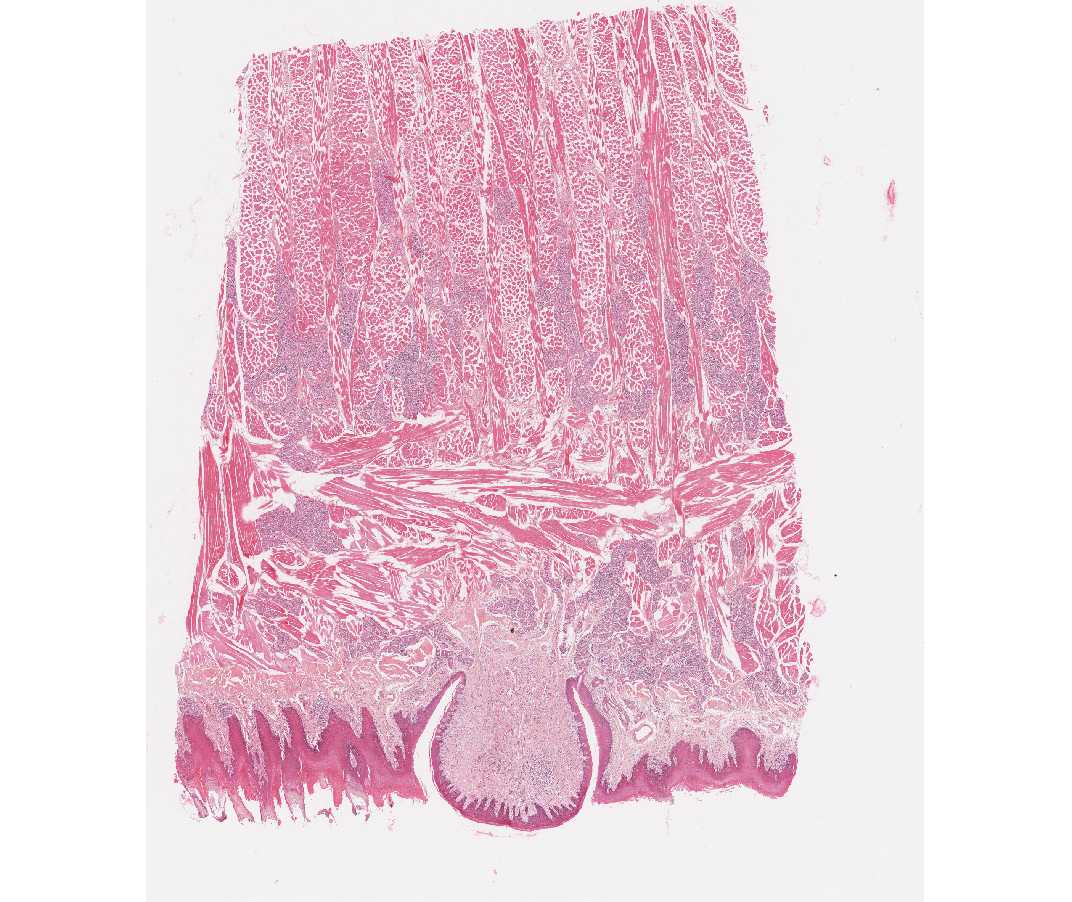SBPMD Histology Laboratory Manual
Gastrointestinal System I: Oral Cavity
The epithelial lining of the oral cavity is of the stratified squamous type. In contrast to the skin it is nonkeratinized. The major salivary glands arise as invaginations of the oral epithelium during the second month of embryonic development, and they are involved with the secretion of the watery, mucus, and enzymatic content of saliva. A discussion of these glands will be postponed for now.
Tongue
The tongue is easily recognized because of its interlacing bundles of skeletal muscle that are disposed in three planes, and by its covering of stratified squamous epithelium that is elevated on the dorsal surface of the tongue, into papillae. There are three types of papillae in man: filiform, fungiform and cicumvallate.
#116 Tongue, human, circumvallate papillae, H & E
Open with WebViewer
The lingual papillae are vertical elevations or projections of the epithelial surface, and they contain a core of connective tissue derived from the lamina propria. In this section there are a number of filiform papillae and a single circumvallate papilla. Note the numerous taste buds on the lateral walls of the circumvallate papilla. Some of these have been sectioned through the taste pore. There are three types of cell within the taste bud: sensory, supporting and basal, but you should not attempt to distinguish them. Find a taste bud in which the taste pore is the plane of the section. There are massive serous glands (glands of von Ebner, a.k.a. lingual salivary glands). In some sections the ducts of these glands may be seen to drain into the furrow of the circumvallate papilla. Note the bands skeletal muscle (artifactually separated) and identify blood vessels and nerves. There is considerable lymphatic invasion, particularly around the secretory portions of the serous glands.
#87 Tongue, Circumvallate Papillae. Mallory-Azan or H & E (not scanned)
Be sure that you examine a slide that has been stained with the trichrome stain, Mallory-Azan, so that you can compare the differences in the staining properties with H&E. Both slender filiform papillae and large circumvallate papillae, encircled by a deep furrow or trench, occur on your slide. Serous glands (of von Ebner) open into the base of the furrow or the circumvallate papillae. Taste buds are scattered along the lateral walls of the circumvallate papillae; these appear as pale-staining oval bodies within the darker-staining epithelium. Identify bands of skeletal muscle.